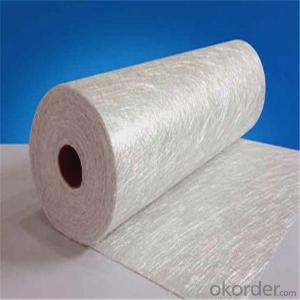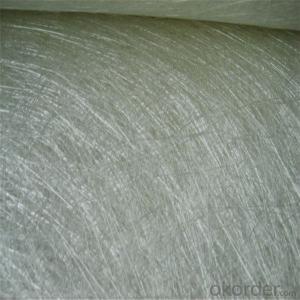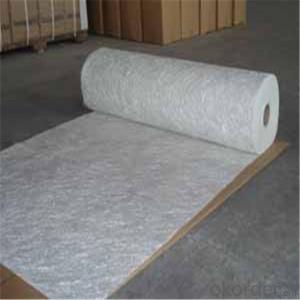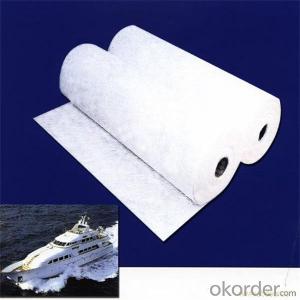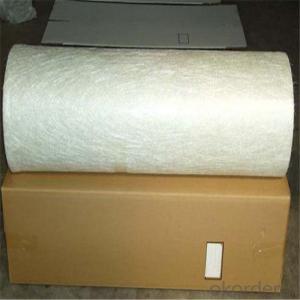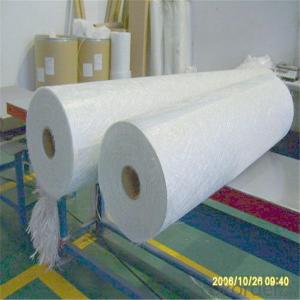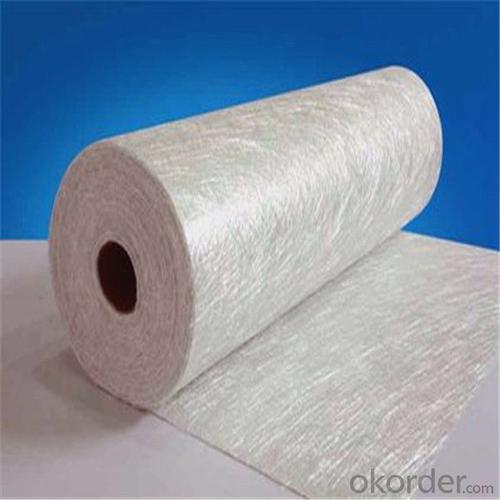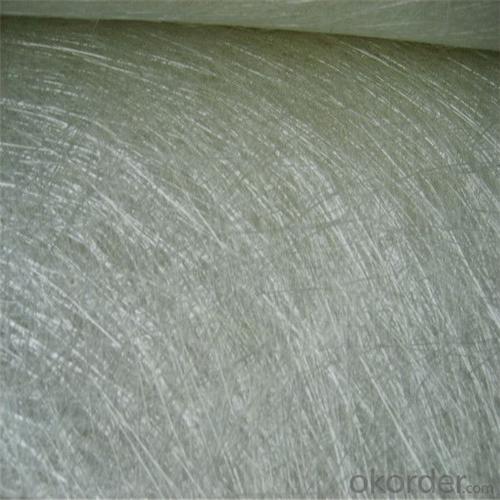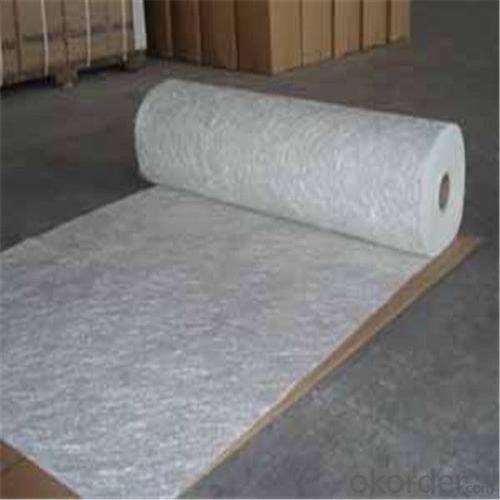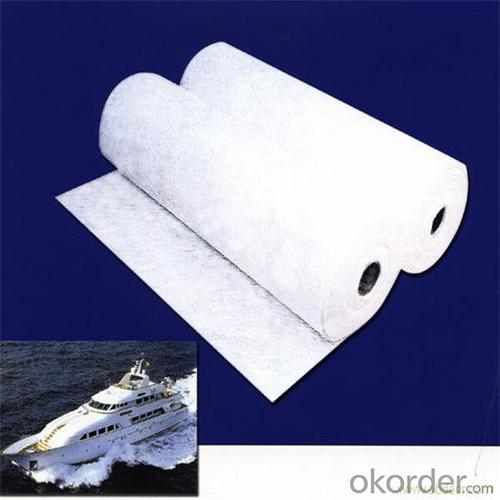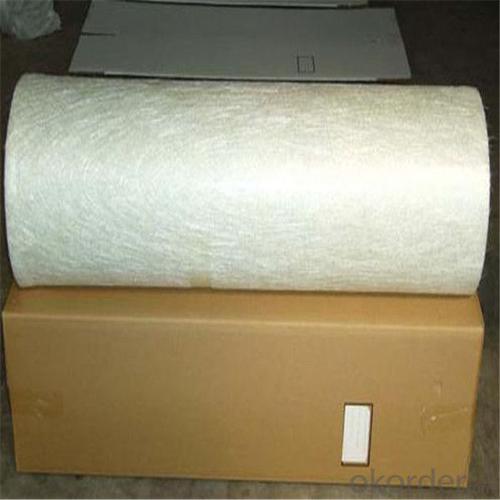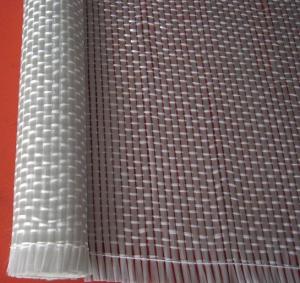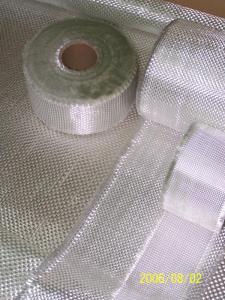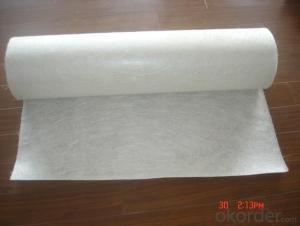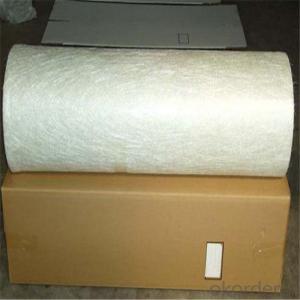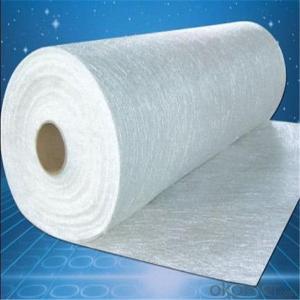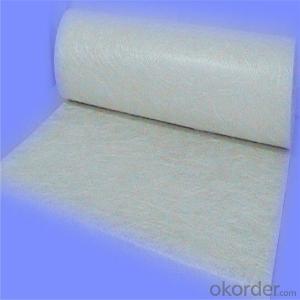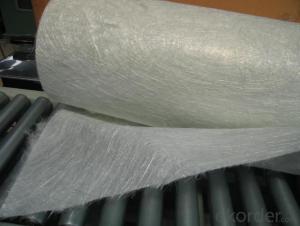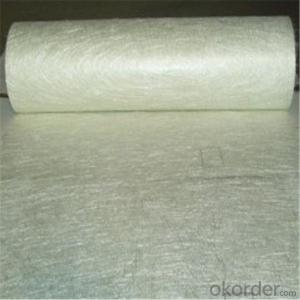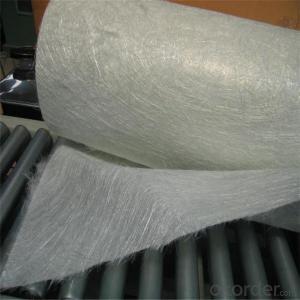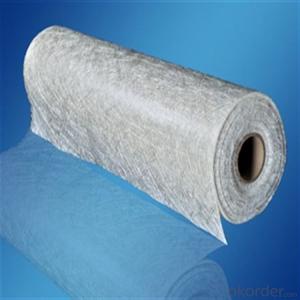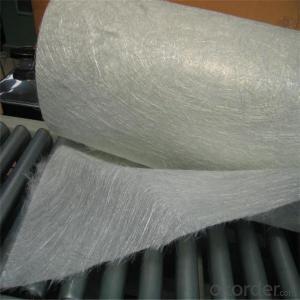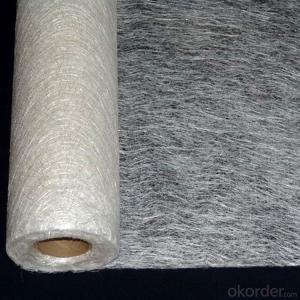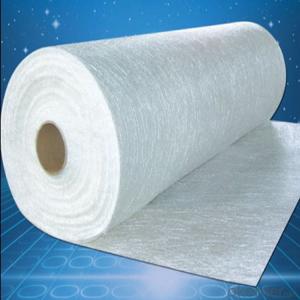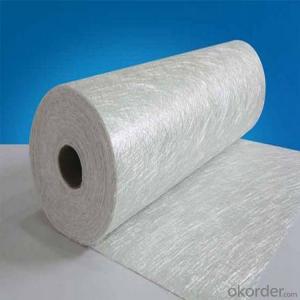2024 e-glass powder chopped stand mats - Chop Strand Fiberglass Roll
- Loading Port:
- Tianjin
- Payment Terms:
- TT OR LC
- Min Order Qty:
- 100 m.t.
- Supply Capability:
- 20000 m.t./month
OKorder Service Pledge
Quality Product, Order Online Tracking, Timely Delivery
OKorder Financial Service
Credit Rating, Credit Services, Credit Purchasing
You Might Also Like
Quick Details
| Technique: | Chopped Strand Fiberglass Mat (CSM) | Dimensions: | 450gsm | Mat Type: | Continuous Filament Mat |
| Fiberglass Type: | E-Glass | Softness: | softness | Place of Origin: | Jiangxi, China (Mainland) |
| Brand Name: | cnbm | Model Number: | 450gsm | color: | white |
| fiberglass type: | E glass | product: | e-glass powder chopped stand mats | binder: | powder or emulsion |
| width: | 1040 or 1270mm, as your requirement | weight: | 30 or 45kg/roll | paper tube diameter: | 90mm |
| outer diameter of roll: | 256mm | packing: | plastic film+carton box + pallet |
Packaging & Delivery
| Packaging Details: | plastic film+carton box + pallet |
| Delivery Detail: | 15-20days |
Specifications
1.e-glass powder chopped stand mats
2.binder:power or emulsion
3.width:1040mm or 1270mm
4.weight:450gsm
Picture
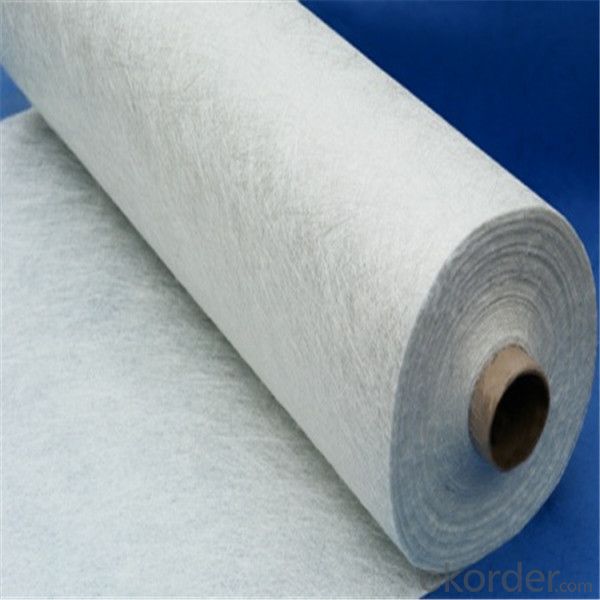
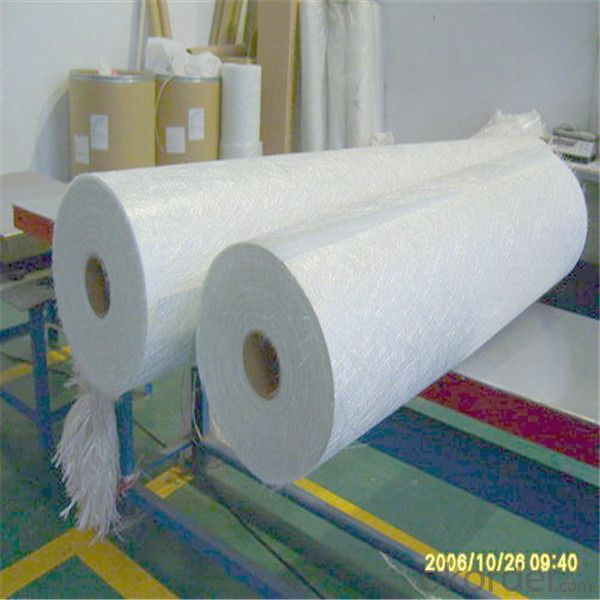
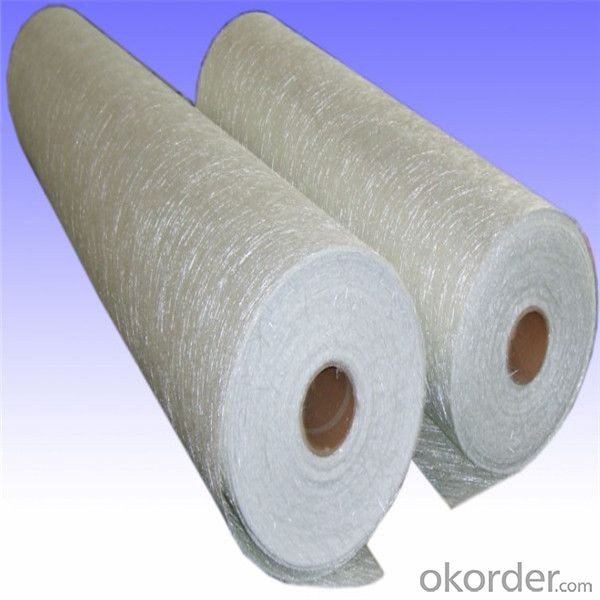
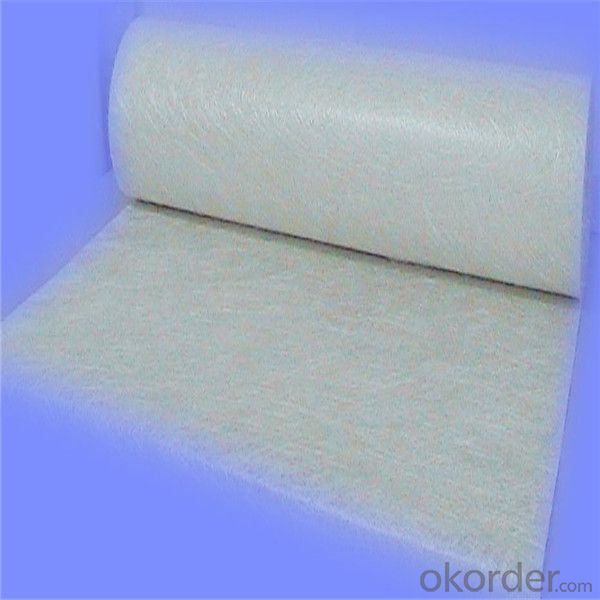
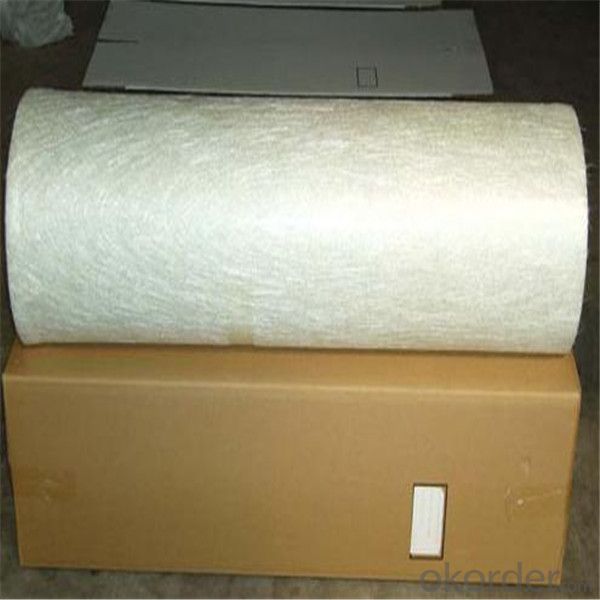
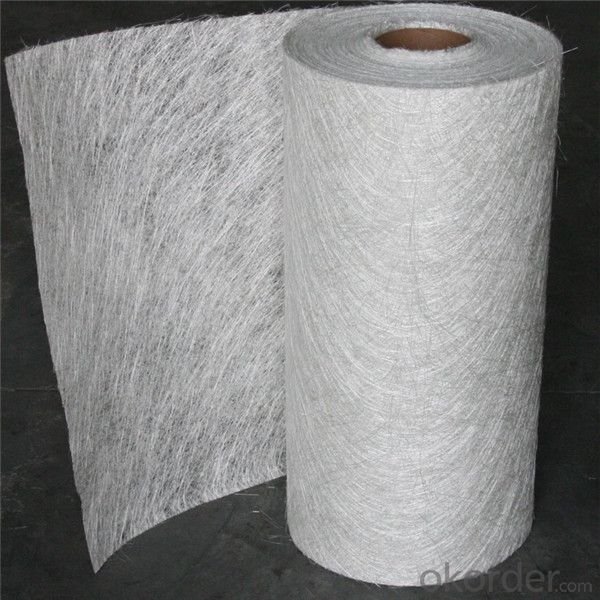
- Q: How does the fiber content affect the coefficient of thermal expansion of chopped strand composites?
- The amount or percentage of fibers present in chopped strand composites is referred to as the fiber content. The change in dimensions of a material due to temperature variations is measured by the coefficient of thermal expansion (CTE). Determining the CTE of chopped strand composites is greatly influenced by the fiber content. Generally, increasing the fiber content results in a decrease in the CTE of the material. This is due to the fact that fibers, such as carbon, glass, or aramid, have lower thermal expansion coefficients compared to the matrix material, which is typically a polymer resin. By increasing the fiber content, the fibers act as reinforcements and restrict the movement of the matrix material. This restriction limits the expansion and contraction of the composite, leading to a lower CTE. The fibers effectively distribute and absorb the thermal stresses that occur during temperature changes, thereby reducing the overall dimensional changes of the composite. It is important to consider that the CTE of the composite is also affected by the type and properties of the fibers used. Different fibers possess different CTE values, and factors such as their orientation, alignment, and interfacial adhesion with the matrix material can impact the thermal expansion behavior of the composite. In conclusion, the fiber content of chopped strand composites significantly influences their coefficient of thermal expansion. Increasing the fiber content decreases the CTE by providing reinforcement, restricting the movement of the matrix material, and absorbing thermal stresses. However, the specific properties of the fibers and their interaction with the matrix material also contribute to determining the final CTE of the composite.
- Q: Is fiberglass chopped strand suitable for high-temperature applications?
- Fiberglass chopped strand is not typically suitable for high-temperature applications. While fiberglass is known for its excellent strength and durability, it has a limited resistance to high temperatures. The melting point of fiberglass is around 1000°C (1832°F), which is relatively low compared to other materials like carbon fiber or ceramic fibers. At temperatures above its melting point, fiberglass can lose its structural integrity and begin to degrade. This can result in its mechanical properties being compromised, such as reduced strength and stiffness. Additionally, exposure to high temperatures can cause the resin matrix within the fiberglass to degrade, leading to a loss of bond between the fibers and compromising the overall performance of the material. For applications that require resistance to high temperatures, it is advisable to consider alternative materials specifically designed for such conditions. Ceramic fibers, for example, are known for their excellent thermal stability and can withstand much higher temperatures compared to fiberglass. Carbon fiber composites can also be suitable for high-temperature applications, as they exhibit good thermal resistance and mechanical properties at elevated temperatures. Ultimately, the choice of material for high-temperature applications should be based on the specific temperature range and performance requirements of the application. It is crucial to consult with materials experts or engineers experienced in high-temperature materials to ensure the selection of the most suitable material for the intended use.
- Q: How is the moisture resistance of fiberglass chopped strand ensured?
- The moisture resistance of fiberglass chopped strand is ensured through a combination of factors. Firstly, during the manufacturing process, the individual glass fibers are coated with a special resin or sizing that helps to repel moisture. This coating acts as a barrier, preventing water from penetrating the fibers and causing damage. Additionally, fiberglass chopped strand is often used in applications where it is further protected from moisture exposure. For example, it is commonly used as a reinforcement material in composite products, such as fiberglass-reinforced plastics (FRP) or fiber cement boards. These composite materials provide an extra layer of protection against moisture, as the resin matrix or cement matrix used in these products is inherently resistant to water. Furthermore, the mechanical properties of fiberglass, including its high strength-to-weight ratio and dimensional stability, contribute to its moisture resistance. Fiberglass chopped strand is known for its excellent resistance to warping, swelling, or rotting when exposed to moisture or humidity. Overall, the moisture resistance of fiberglass chopped strand is ensured through the combination of its inherent properties, manufacturing processes, and the protective measures taken in the applications where it is used.
- Q: Does fiberglass chopped strand improve the vibration damping properties of composite materials?
- Yes, the vibration damping properties of composite materials can be improved by using fiberglass chopped strand. Fiberglass possesses inherent damping properties because of its viscoelastic nature, enabling it to absorb and dissipate energy during vibrations. When utilized as a reinforcement in composite materials, the fiberglass chopped strand enhances the overall damping characteristics of the composites. The dispersion of chopped strands throughout the composite matrix, facilitated by their random orientation and short length, results in the creation of an interlocking network. This network aids in the dissipation of vibration energy by hindering the propagation of vibration waves, thereby reducing their amplitude and frequency. Consequently, the composite material exhibits enhanced vibration damping properties. Moreover, the high strength and stiffness of fiberglass contribute significantly to the overall performance of the composite material. By reinforcing the matrix, the fiberglass chopped strand increases the rigidity of the composite, minimizing the magnitude of vibrations. This combination of damping and reinforcement properties makes fiberglass chopped strand an ideal choice for applications requiring vibration damping. It should be noted that the specific improvement in vibration damping properties may vary depending on the composition and design of the composite material, as well as the amount and distribution of the fiberglass chopped strand. Proper selection and incorporation of the chopped strand are vital for achieving the desired vibration damping characteristics in composite materials.
- Q: Can fiberglass chopped strand be used in the production of insulation panels?
- Yes, fiberglass chopped strand can be used in the production of insulation panels. Fiberglass chopped strand is commonly used as a reinforcement material in various composite applications, including insulation panels. It provides strength, durability, and thermal insulation properties to the panels. The chopped strands are mixed with a binder material and then formed into panels using various manufacturing techniques such as compression molding or pultrusion. The resulting insulation panels offer excellent thermal insulation properties, low thermal conductivity, and high resistance to heat transfer, making them suitable for a wide range of applications in the construction and industrial sectors.
- Q: What are the cost considerations when using fiberglass chopped strand?
- When using fiberglass chopped strand, there are several cost considerations to keep in mind. Firstly, the cost of the chopped strand itself is a factor, as it varies depending on the quality and quantity needed for the project. Additionally, transportation costs should be considered, especially if the chopped strand needs to be shipped from a distant supplier. Another cost consideration is the labor involved in handling and applying the chopped strand, as it requires skilled workers and equipment. Furthermore, if any special treatments or coatings are required for the chopped strand, their costs should be factored in as well. Lastly, maintenance and repair costs should be considered, as fiberglass chopped strand may require occasional repairs or replacements. Overall, it is important to carefully assess all these cost factors to determine the most economical approach when using fiberglass chopped strand.
- Q: How does the fiber diameter affect the properties of fiberglass chopped strand?
- The properties of fiberglass chopped strand are significantly influenced by the diameter of its fibers. The strength, flexibility, and overall performance of the fiberglass are directly impacted by the fiber diameter. When the fiber diameter is smaller, it generally leads to increased strength and stiffness of the chopped strand. This is because the smaller fibers can tightly pack together, resulting in a higher fiber volume fraction and enhancing the material's load-bearing capacity. Additionally, smaller fibers tend to have fewer defects, further improving their strength. On the other hand, larger fiber diameters can contribute to increased flexibility and impact resistance of the chopped strand. The larger fibers provide more space for movement and deformation, allowing the material to absorb and dissipate energy during impacts or bending. This can be advantageous in applications where toughness and resilience are crucial, like automotive parts or sports equipment. The fiber diameter also affects the surface area of the chopped strand. Smaller fibers have a greater surface area per unit volume, which enhances the bonding and adhesion of the fibers with the resin matrix. This results in improved mechanical properties, including increased tensile strength and better resistance to delamination. Moreover, the processing characteristics of the chopped strand are influenced by the fiber diameter. Smaller fibers disperse more easily in the resin, leading to a more homogeneous mixture and overall better performance. Conversely, larger fibers may require additional processing steps, such as chopping or grinding, to achieve proper dispersion and ensure uniformity in the final product. To summarize, the fiber diameter of fiberglass chopped strand is crucial in determining its mechanical, processing, and performance properties. The selection of the appropriate fiber diameter depends on the specific requirements of the application, considering factors like strength, flexibility, impact resistance, and processability.
- Q: How does the fiber-matrix adhesion distribution of fiberglass chopped strand affect the properties of composites?
- The properties of composites are greatly affected by the way in which the fibers and matrix material in fiberglass chopped strand are bonded together. Fiberglass chopped strand composites consist of individual glass fibers that are embedded in a polymer resin or other matrix material. The strength and stiffness of the composite are determined by the level of adhesion between the fibers and the matrix. A higher level of adhesion results in better load transfer, resulting in increased strength and stiffness. Conversely, a weak bond can lead to reduced overall strength and stiffness. The distribution of the adhesion between the fibers and the matrix also affects the durability and resistance to fatigue of the composite. A uniform distribution of adhesion ensures that the load is evenly spread across the fibers, reducing the likelihood of fiber debonding or delamination. This improves the durability and resistance to fatigue, making the composite less prone to cracking, deformation, and failure under cyclic loading conditions. Furthermore, the adhesion distribution influences the thermal and chemical resistance of the composite. A strong and uniform adhesion helps to efficiently transfer stress, reducing the risk of localized heating and thermal degradation. Similarly, a good adhesion distribution prevents the penetration of chemicals into the composite, protecting it against chemical degradation. In conclusion, the distribution of adhesion between the fibers and the matrix is a crucial factor that affects the mechanical, durability, thermal, and chemical properties of fiberglass chopped strand composites. A strong and uniform distribution enhances the strength, stiffness, durability, resistance to fatigue, thermal resistance, and chemical resistance of the composites, making them suitable for a range of applications in industries such as automotive, aerospace, construction, and marine.
- Q: What are the chemical resistance properties of fiberglass chopped strand?
- Fiberglass chopped strand has excellent chemical resistance properties. It is resistant to a wide range of chemicals, including acids, alkalis, and solvents. This makes it a suitable material for various applications where exposure to chemicals is expected.
- Q: What are the surface finish options for fiberglass chopped strand?
- The surface finish options for fiberglass chopped strand include smooth, textured, matte, and glossy finishes.
Send your message to us
2024 e-glass powder chopped stand mats - Chop Strand Fiberglass Roll
- Loading Port:
- Tianjin
- Payment Terms:
- TT OR LC
- Min Order Qty:
- 100 m.t.
- Supply Capability:
- 20000 m.t./month
OKorder Service Pledge
Quality Product, Order Online Tracking, Timely Delivery
OKorder Financial Service
Credit Rating, Credit Services, Credit Purchasing
Similar products
Hot products
Hot Searches
Related keywords
